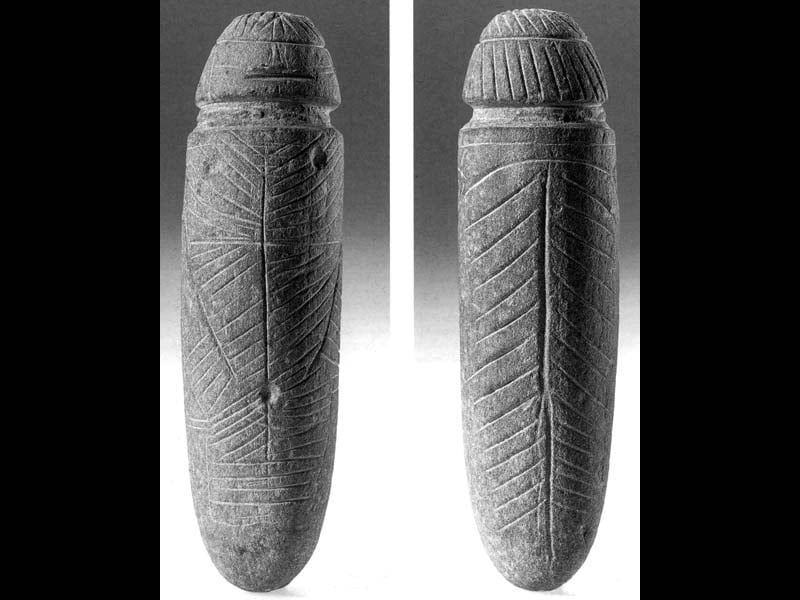It is a pebble of fine-grained gray sandstone shaped by the fluvial flow into an oblong shape with rounded ends (phallic shape), with a slightly arched longitudinal axis and an ellipsoidal cross-section. The head separated from the trunk by an incised furrow is decorated with incisions that seem to represent a head of hair surrounded by a cord at the top; the face is broad and flattened, the body in front is covered by a plot of oblique lines; three cup marks, located at the vertices of an ideal inverted triangle, indicate the breasts and the sex; from the shoulder, rendered with an engraved triangle, the arms descend at the end of which a regular rectangle divided by two parallel lines represents the hand and the five fingers. On the back, the herringbone design seems to repeat the motif on the front, albeit with a different form.

Historical notes
During a break-in carried out for the planting of a vineyard near Castelvetro in the province of Modena, materials belonging to various periods were collected: Paleolithic, Eneolithic, Bronze Age, Villanovan age. In particular, the pebble was found, together with other materials from the Etruscan necropolis of Galassina, during the excavations that took place in 1879.
CARD
LATEST PUBLISHED TEXTS
VISIT THE FACTSHEETS BY OBJECT

